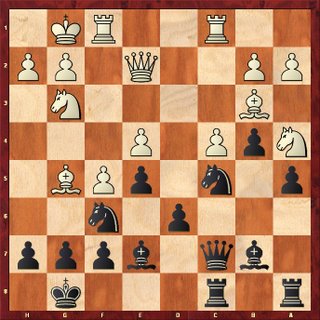Counting problems are problems in which you have some material attacking a piece, your opponent has some material defending it, and you need to determine whether to make the capture, and which piece to use. Where are all the counting problems? They are great exercises for patzers like me to build calculation muscle, as they force you to visualize simple game trees.

Here is a very simple example, from Wolff's book (see below). White to move.
There isn't much written on such problems. Perhaps authors consider them too simple. They usually just give the
rules for solving them, and provide a couple of examples (usually authors say that if there are more attackers pointing at a piece than there are defenders guarding it, and/or the sequence of exchanges will leave you with the better position, then take the material). A simple rule, no? A monkey could do it! Well, in practice, in the thick of a game, with multiple potential captures, with time constraints, things aren't that simple. Not for me, with my
inefficient thinking and poor visualization skills.
There is
some writing about such problems.
A Counting Primer by Heisman provides a good introduction, as does
The Complete Idiot's Guide to Chess by Wolff. Heisman has other relevant stuff: for instance, an article on queiscience errors
here, and he talks more about counting errors
here. The above two authors' puzzles amount to fewer than 30 such problems!
A set of 1000 such counting problems, in increasing order of difficulty, is what I need. If it does exist, or something close, I will send whoever points it out to me first a copy of a chess book in my collection. I'll have to check it out to make sure it is truly a bunch of counting problems, not general 'tactical' software,
of which there is no shortage. Many tactical puzzles end up being having counting problems as subproblems, so that is helpful, but they aren't straightforward counting problems.
You might say "Just play lots of games to improve at this" I could, but just like basic tactics, I could pick it up a lot faster with 1000 counting problems! I should be able to solve these simple problems effortlessly, but according to Dan Heisman, players under 1400 make lots of counting errors.







